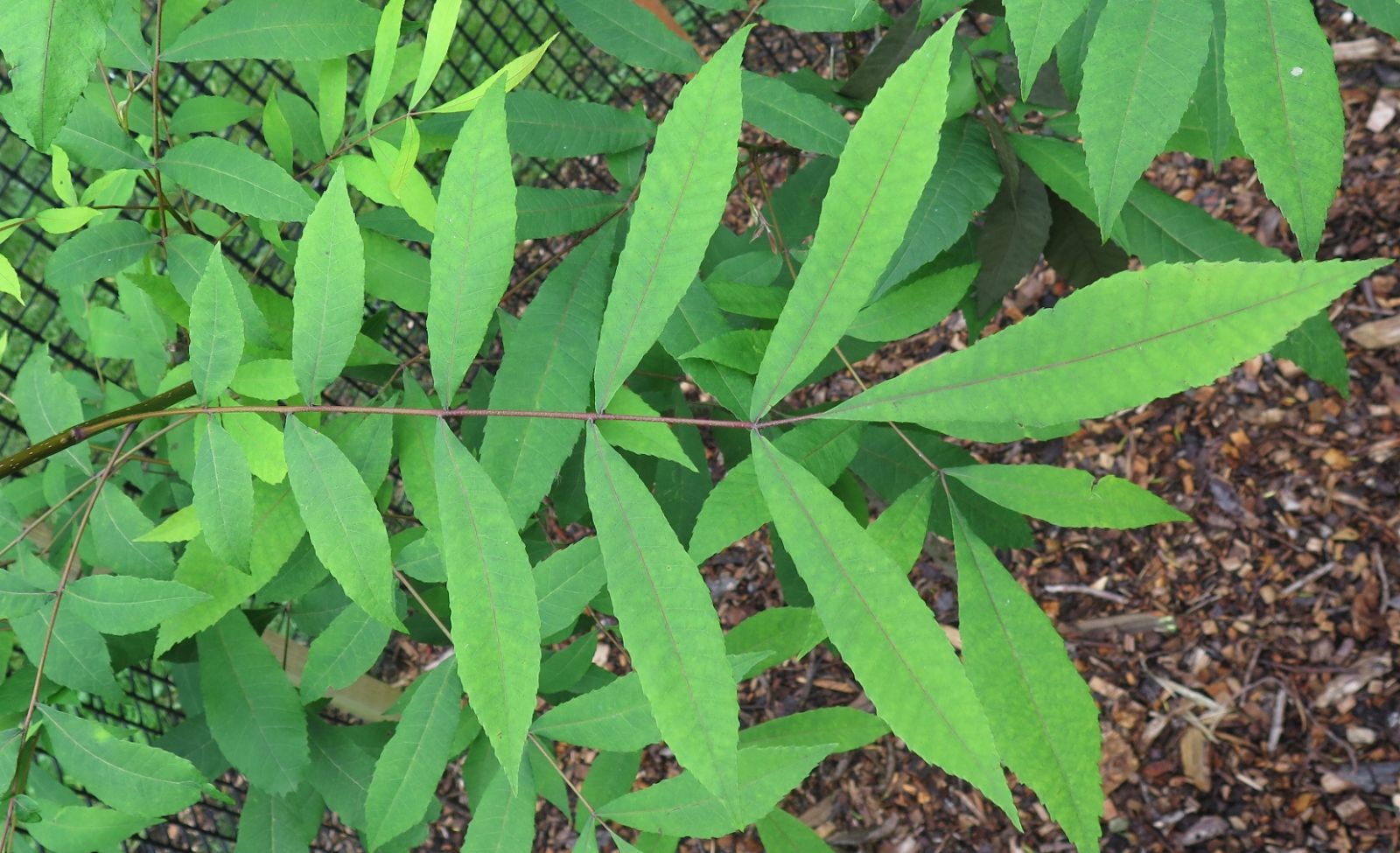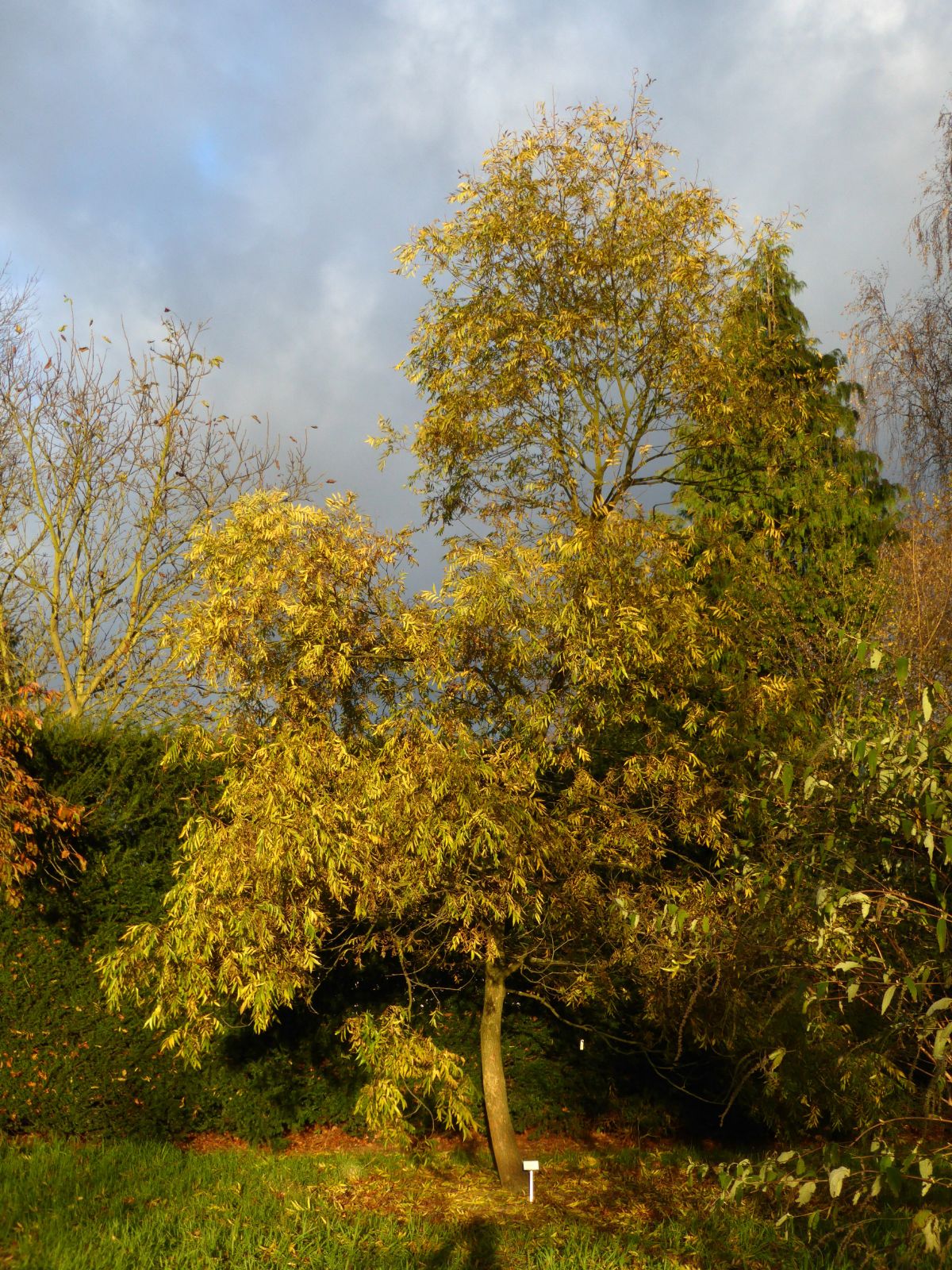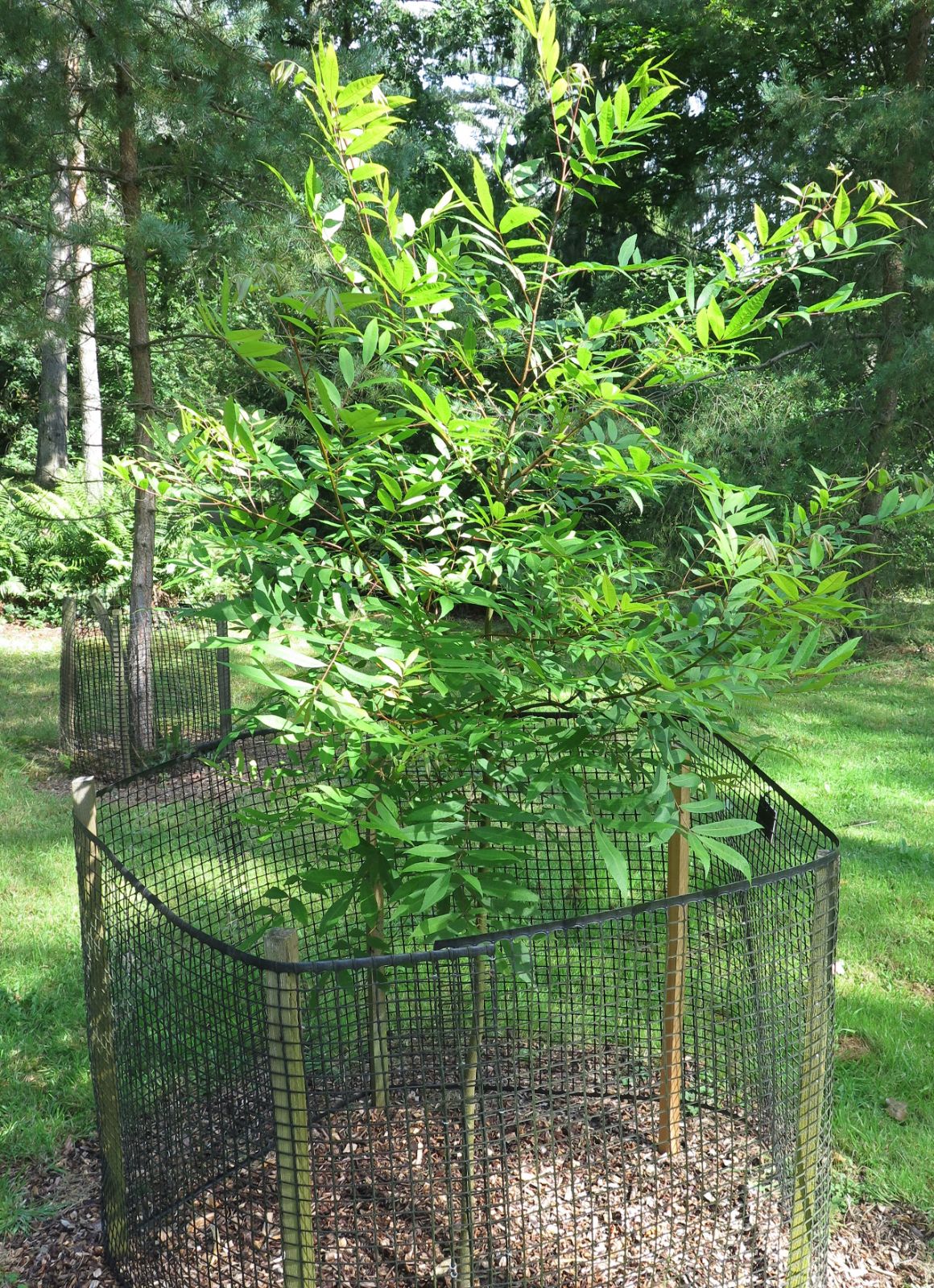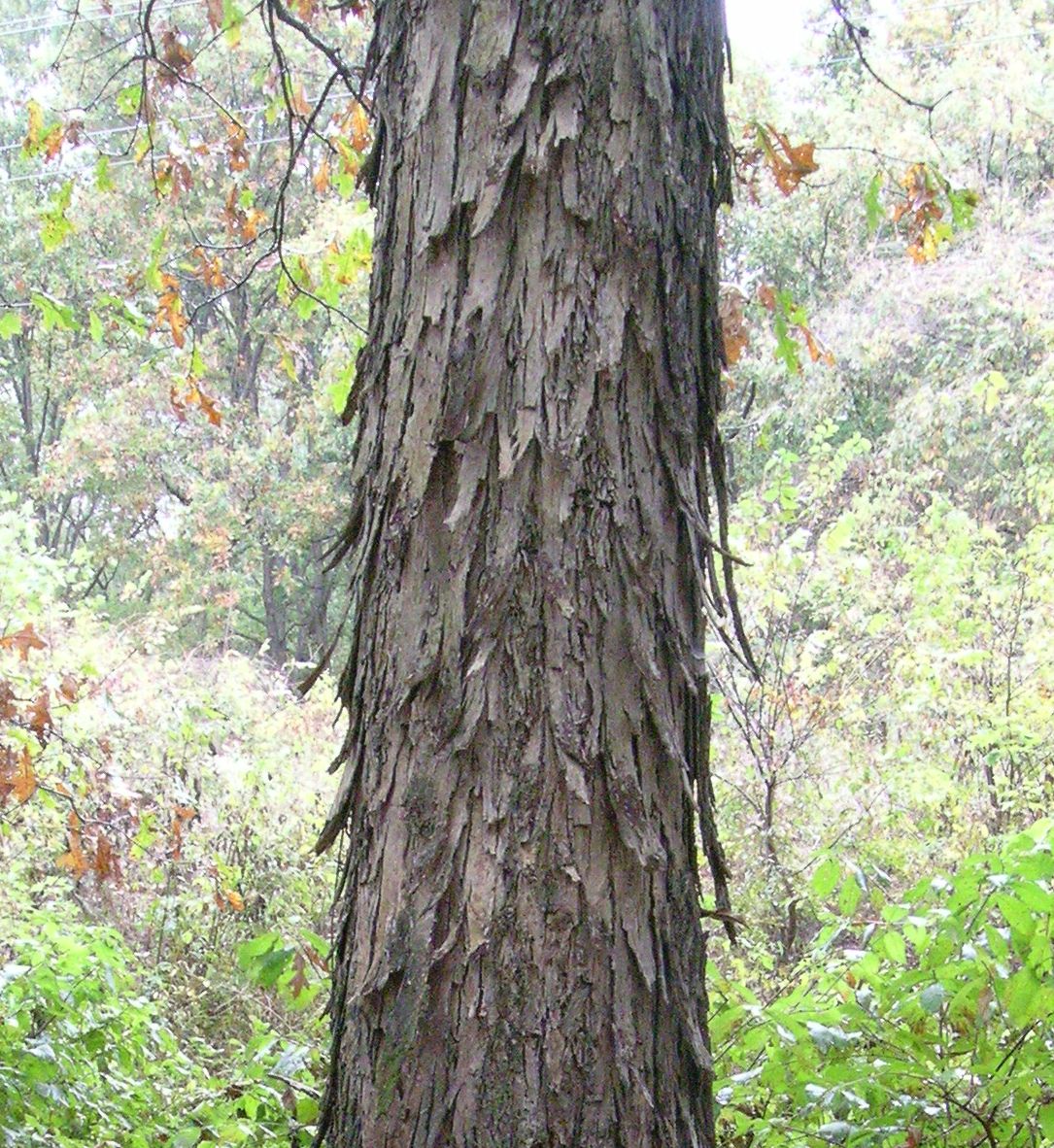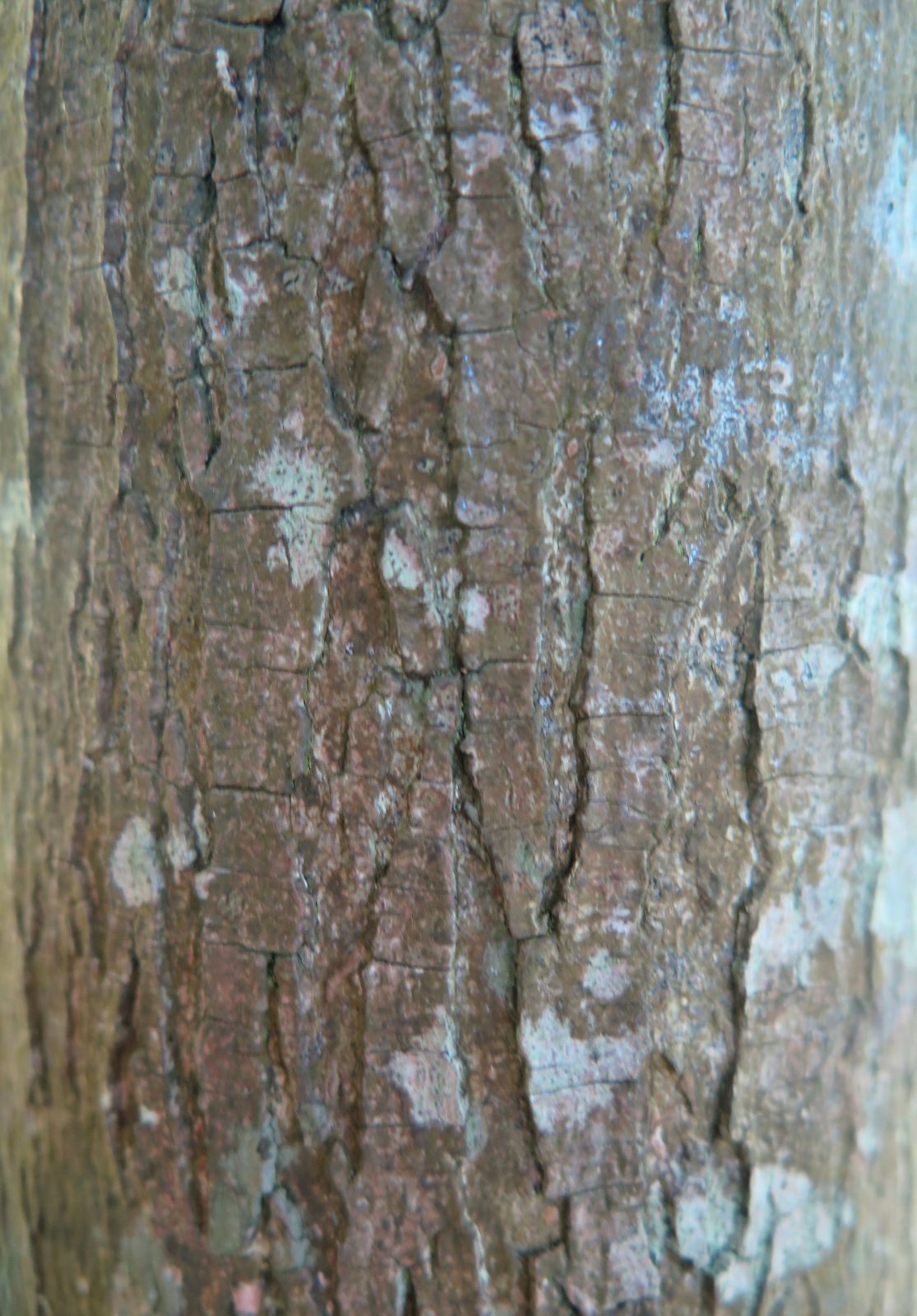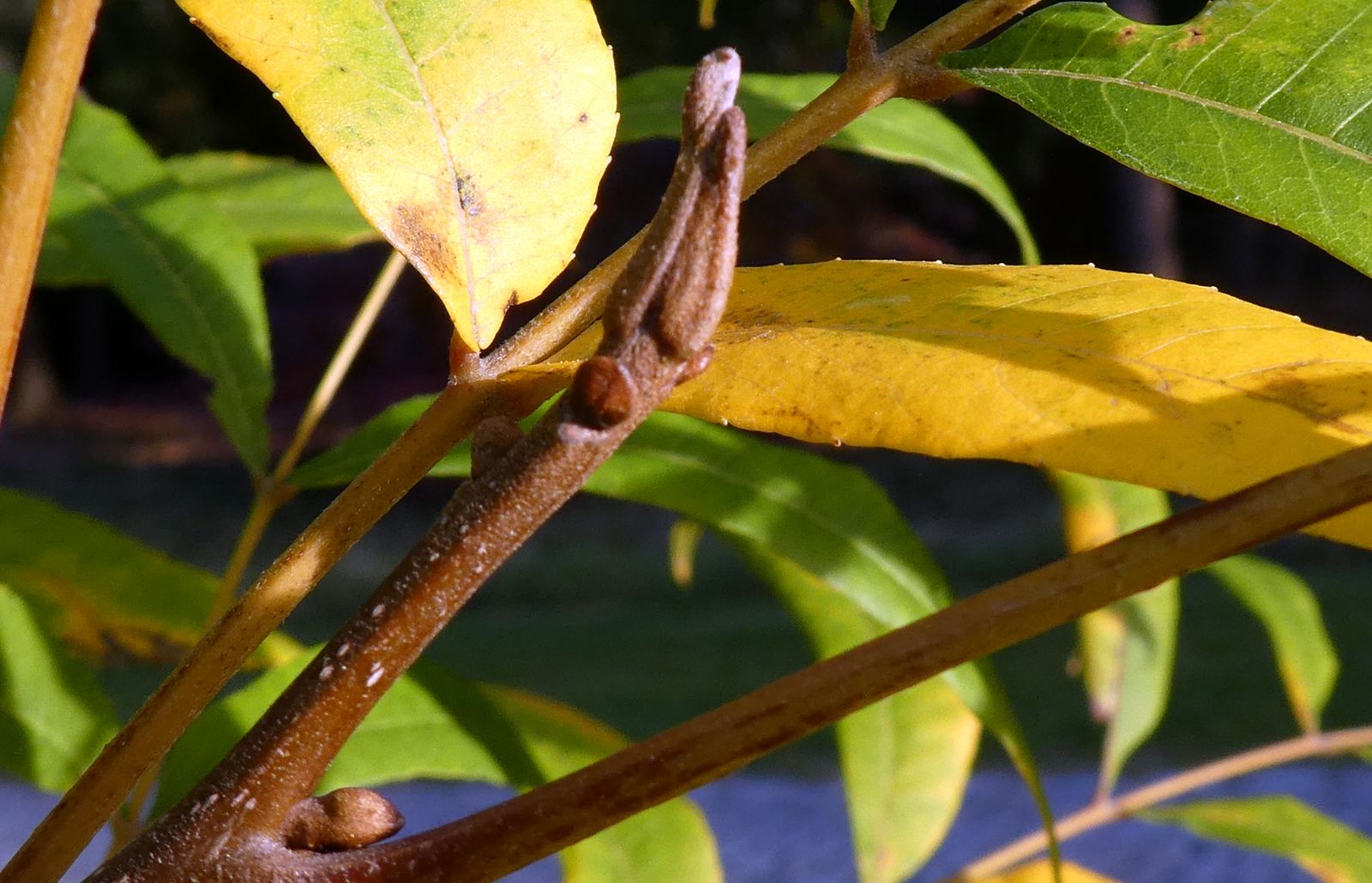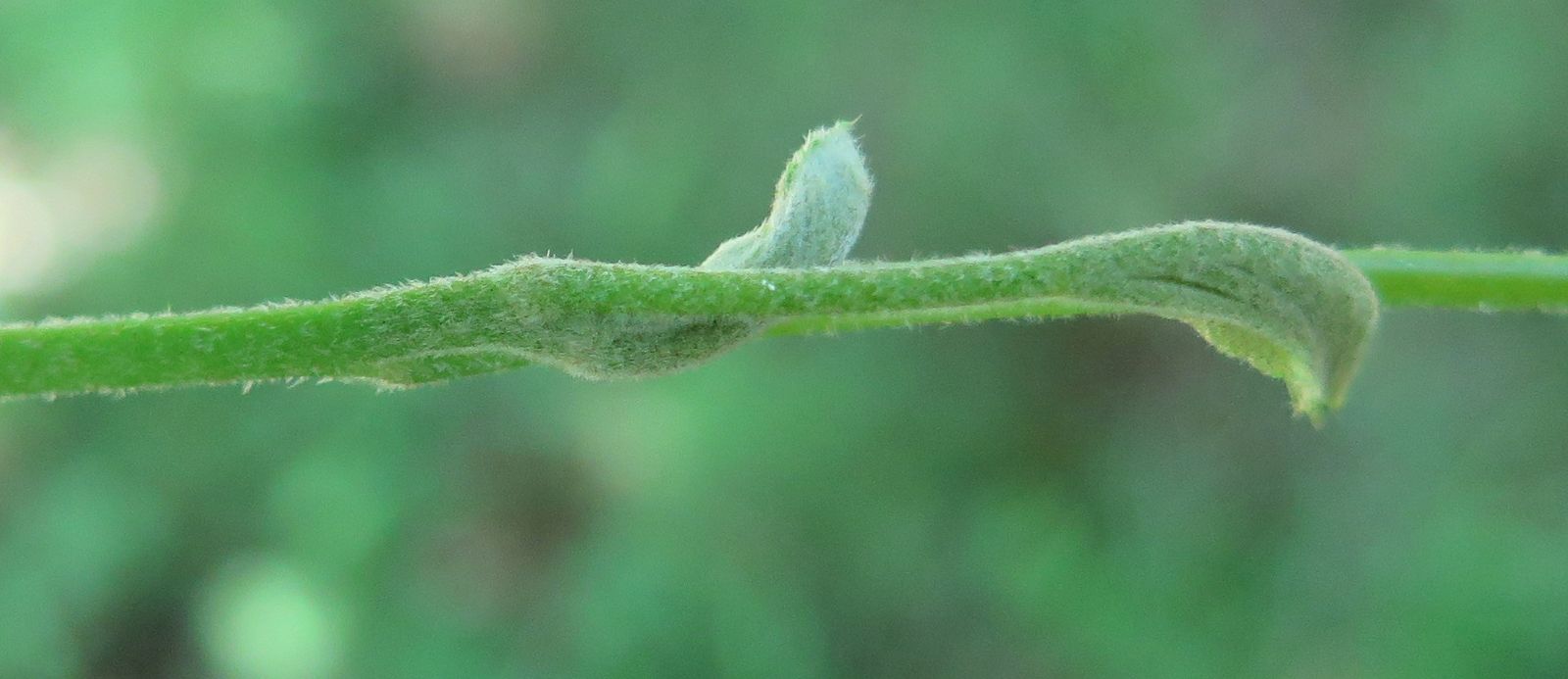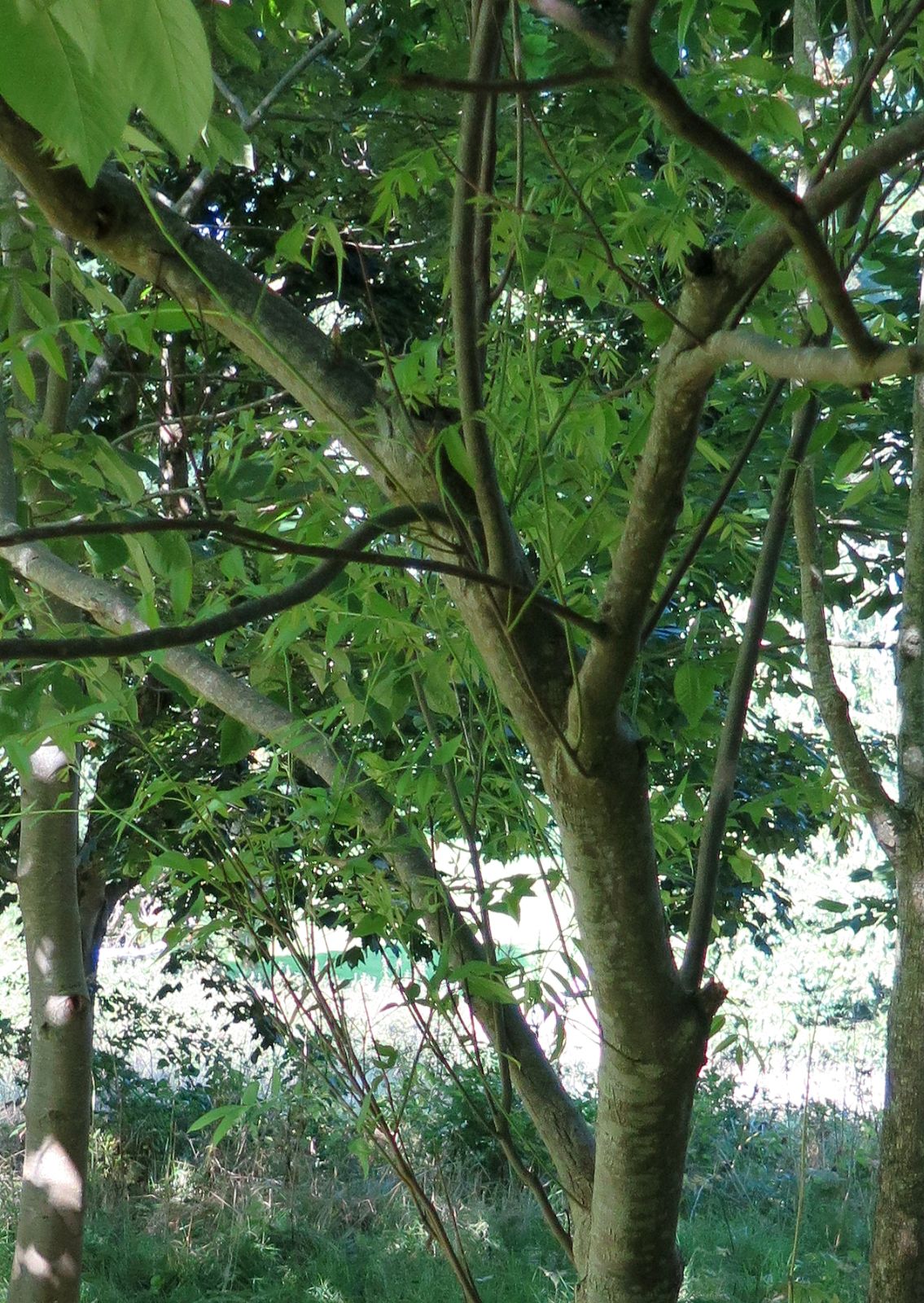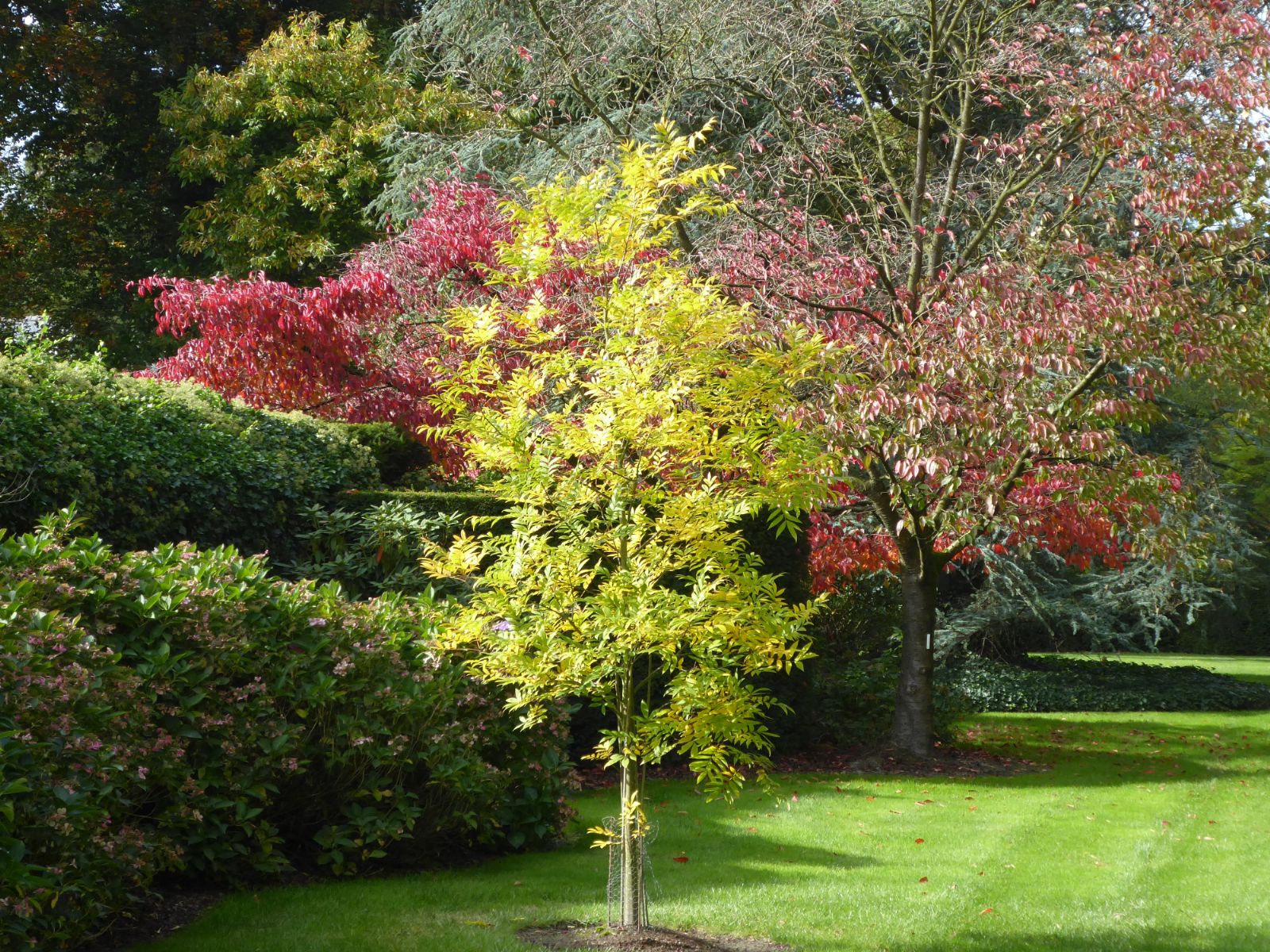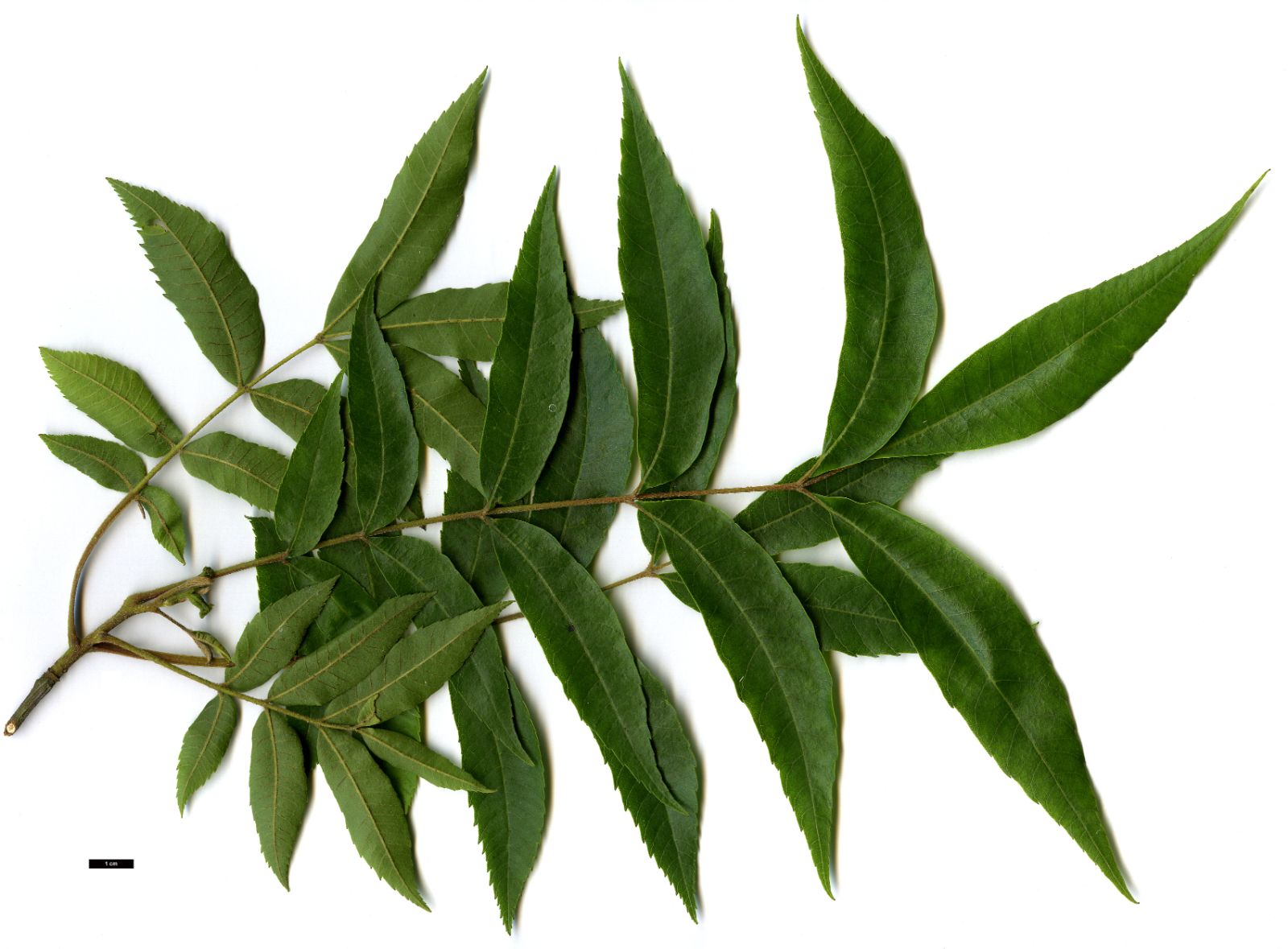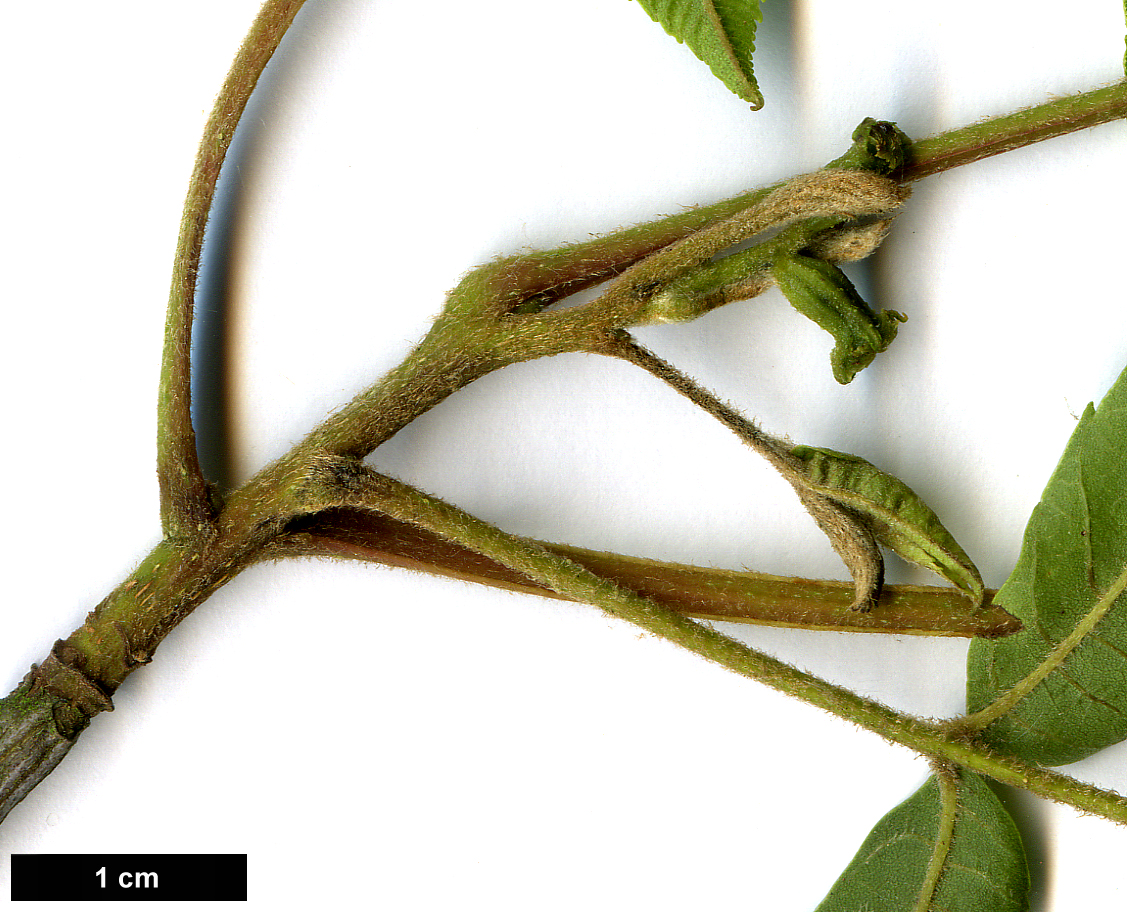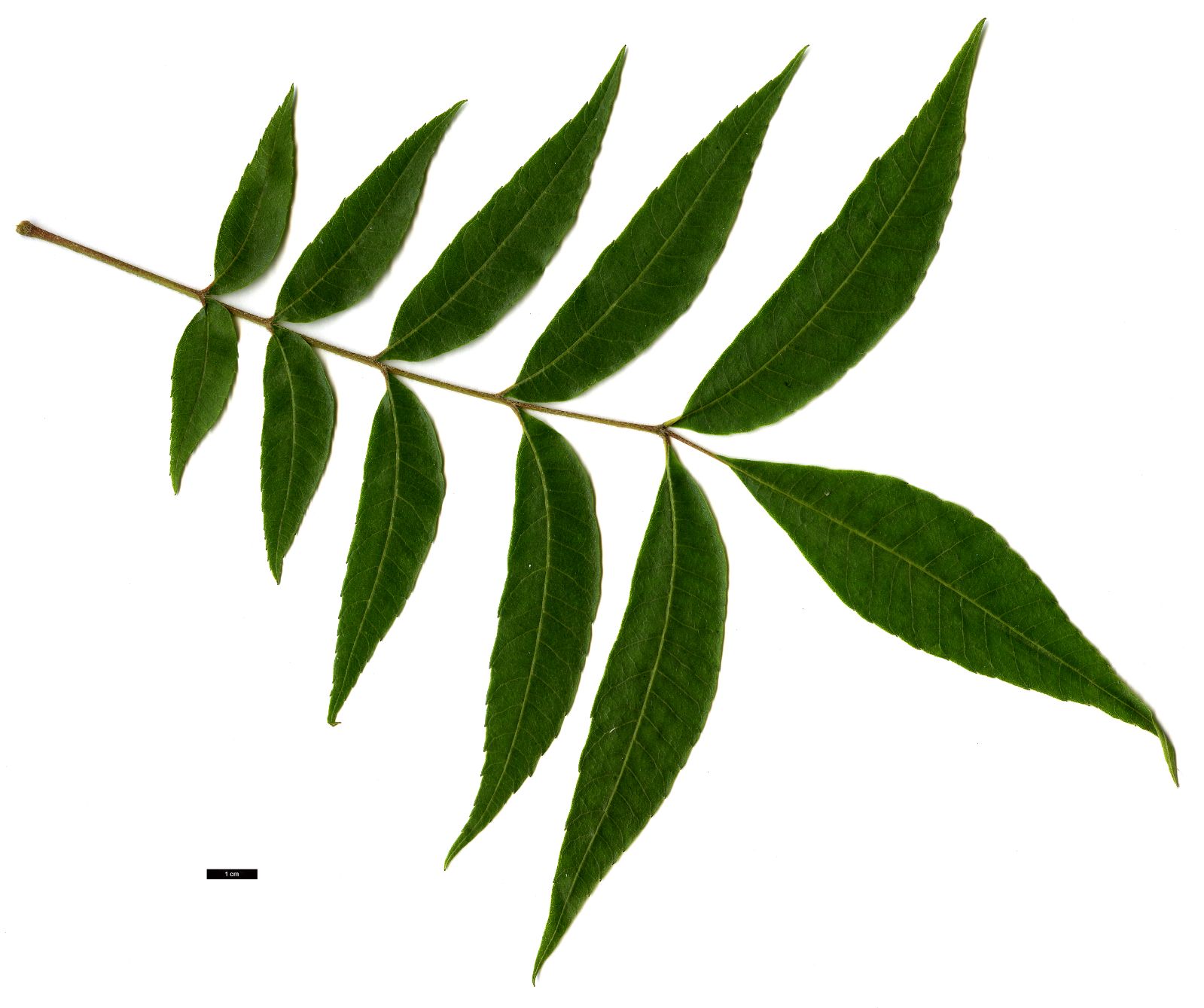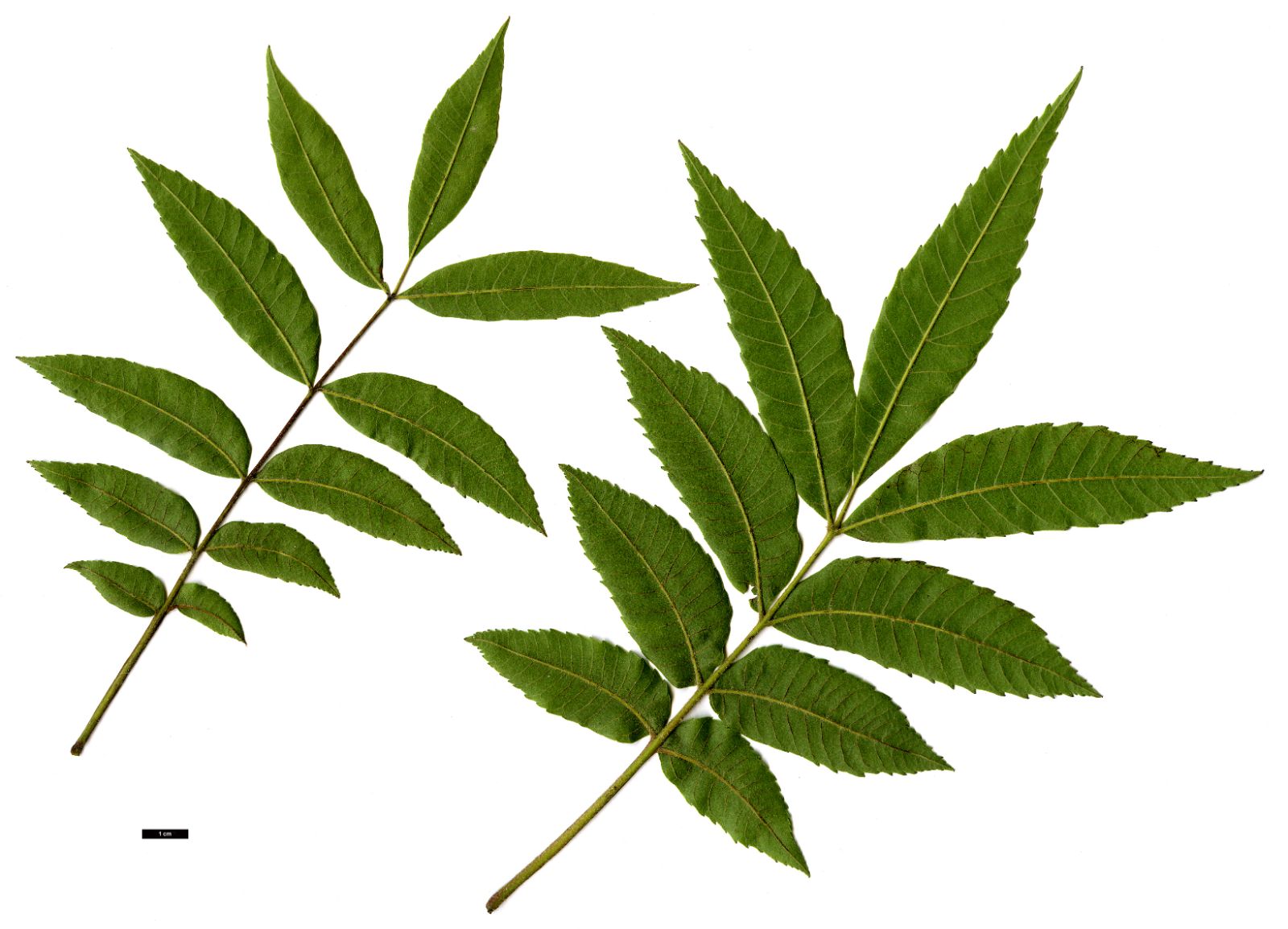Carya aquatica
Sponsor
Kindly sponsored by
a member of the International Dendrology Society
Credits
Julian Sutton & Dan Crowley (2020)
Recommended citation
Sutton, J. & Crowley, D. (2020), 'Carya aquatica' from the website Trees and Shrubs Online (treesandshrubsonline.
Large tree to 46 m in the wild. Bark light grey to brown, exfoliating in long strips, or large plates, rarely with small plate-like scales. Branchlets brown to reddish brown, slender, villous at first, later glabrous. Terminal bud oblong, 0.8–1 cm long, reddish-brown to black; yellow-scaly, villous; bud scales valvate; axillary buds protected by bracteoles fused into hood. Leaves deciduous, imparipinnate, 22–38 cm long; leaflets (7–)9–11(–13), ovate to lanceolate, often falcate, 2–19 × 1–4 cm, upper surface villous along midvein towards the base, lower surface villous with unbranched and branched hairs along midvein and secondary veins, densely scaly when young, with large peltate scales and small round, irregular, and 4-lobed peltate scales; margins finely to coarsely serrate to entire and wavy, apex acuminate; lateral petiolules 0–0.2 cm long; terminal petiolules 0.2–1.4 cm; petiole 3–8 cm long, villous at first, later glabrous. Male catkins to 21 cm long, hairy and scaly. Fruits bronze, brown or black, 1.5–3 × 1.5–2.5 cm, obovoid, compressed, splitting to, or near, the base; nuts dark brown, broadly obovoid, compressed, sutures winged. (Bean 1976; Stone & Whittemore 1997; Whittemore 2013).
Distribution United States Southeast, extending north either side of the Appalachians to southern Virginia and southern Illinois.
Habitat Swamps, river floodplains, bottomland forests with periodic inundation; 0–200 m.
USDA Hardiness Zone 6-9
RHS Hardiness Rating H4
Conservation status Least concern (LC)
Native to the American Southeast and southern Midwest, the Water Hickory was first collected around the beginning of the 19th century (Bean 1976). It was first described as Juglans aquatica by the French botanist François André Michaux in 1811, when much of the southeast was still under French influence. The species was transferred to Carya in botanist and plantation owner Stephen Elliott’s seminal A Sketch of the Botany of South Carolina and Georgia of 1824.
Fundamentally a wetland species, it tolerates not only wetter soil but a wider range of soil moisture than any other hickory, growing well even on heavy soils which are waterlogged in winter but desiccated in summer (Grauke 2003; Sternberg 2004). Sargent (1918) observed that the bark of trees in drier habitats tends to be paler and less inclined to form long, loose strips than from those in wet ground. Especially on drier ground, it has increased where more desirable competing species have been cut (Francis 1990).
Its elongated terminal buds with leaf-like scales show this to be a pecan hickory. In the absence of ecological clues, it is most easily confused with C. illinoinensis. Useful identification features include the mature terminal buds appearing very dark brown or black, despite their yellow scales; the leaflets being usually narrower than in illinoinensis, with more symmetrical bases; early spring growth often having a purplish tint to the shoot and rachis; thin, prominently ridged husks and rough, flattened, four-angled nuts (Grauke 2003).
The timber is poor by hickory standards, but is used locally as firewood; cut trees shoot well from both stump and roots (Francis 1990). Like C. cordiformis, the nuts are bitter; remarkably for a widespread North American tree, there appear to be no published records of the use of any part of the plant by indigenous peoples (Moerman 2019). Despite their bitterness the nuts are sometimes taken by birds and rodents, but water seems to be an important means of seed dispersal (Francis 1990).
Uncommon in European collections, Bean (1976) suggested that it is not well adapted to the British climate, unlike other species found alongside it in the wild such as Liquidambar styraciflua. Modern evidence at least does not support this. There is a group of three at Exbury Gardens, Hampshire, the largest measured at 18 m × 39 cm in 2017. These were perhaps derived from a batch of hickory seeds, including C. aquatica, offered to Lionel de Rothschild in the 1920s by Ernest Wilson during his time at the Arnold Arboretum, although this has not been proven (T. Clarke, pers. comm. 2019). Away from the south coast there are several smaller specimens including one at Kew, planted in 1986 from Howick 179 (5 m × 9 cm in 2017) and others in private collections in the east of England (The Tree Register 2019).
Specimens collected in South Carolina on the Westonbirt-led expedition of 2014 (WECA 57) are establishing well at Westonbirt, the tallest measuring 1.9 m tall in December 2018. These evidently benefited from the prolonged summer heat of 2018 and would likely thrive should longer, hotter UK summers become a theme. Seeds were collected at sunset in late summer on the banks of the Savannah River at Little Hell Landing Point, a location far more appealing than its name suggests. There, the species associates with Taxodium distichum and Nyssa sylvatica, as is often the case (D. Crowley, pers. obs.). Seedlings from the same collection sent to RBG Edinburgh have yet to be planted.
In Belgium, there is a specimen at Meise Botanic Garden, grown from seed received in 1989, which has fruited (Meise Botanic Garden 2019); there are also slightly younger examples at Arboretum Wespelaar and Arboretum Provinciaal Domein Bokrijk (Plantcol 2019).
This species is not widely represented in North American collections. Dirr (2009) mentions a 21 m tall specimen in the Coker Arboretum, North Carolina, and promotes it as a potential landscape tree in the southeast. European experience suggests that it could be more widely growable. Certainly, there are two trees at the Arnold Arboretum, Massachusetts, measured at 18 and 20 cm dbh in 2016 from a 1989 seed collection (others dating from around 1920 have long since died or been removed – Arnold Arboretum 2019), and the species is recorded at Washington Park, Seattle (University of Washington Botanic Gardens 2019). The existing Arnold trees, like those at Meise, are of Louisiana provenance; one wonders what could be done with material from the northwestern limits of the species’ range.
Dirr (2009) draws attention to the transplantability of Carya aquatica, a rare trait among hickories and one shared with another of the non-true hickories, C. cathayensis. Trials in Georgia, United States, have transplanted trees without experiencing any losses. While Water Hickory does produce a taproot, it does not go very deep, at least on wetter soils (Francis 1990). Its autumn colour is less spectacular than other members of the genus.

